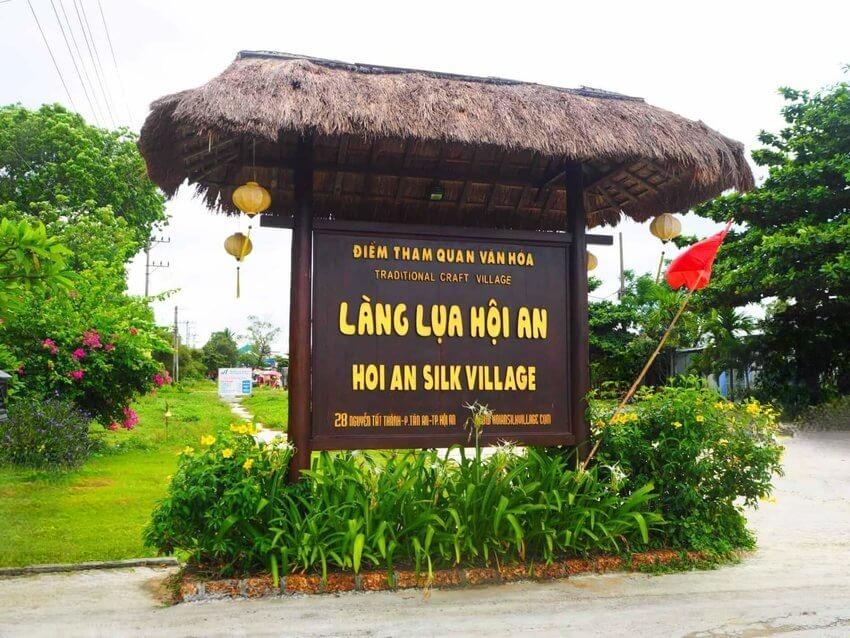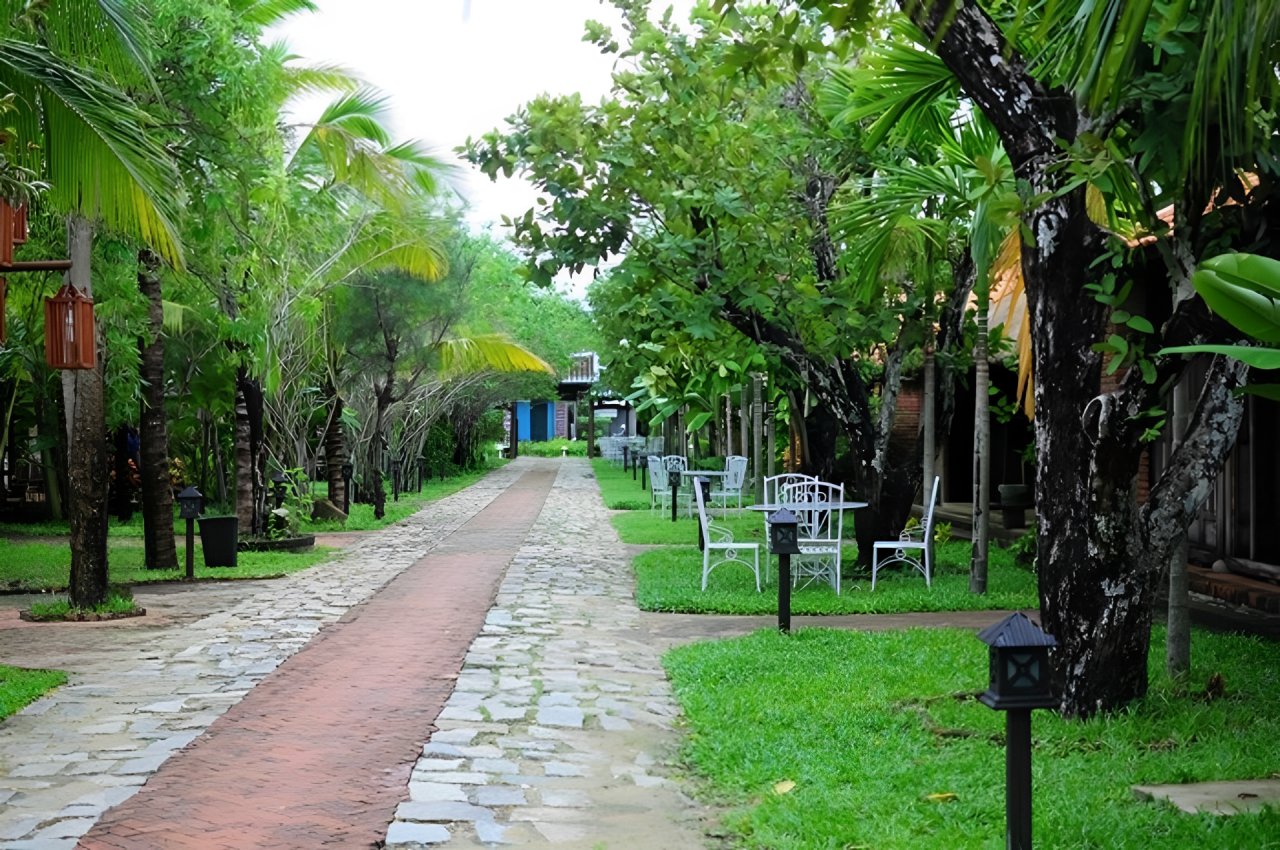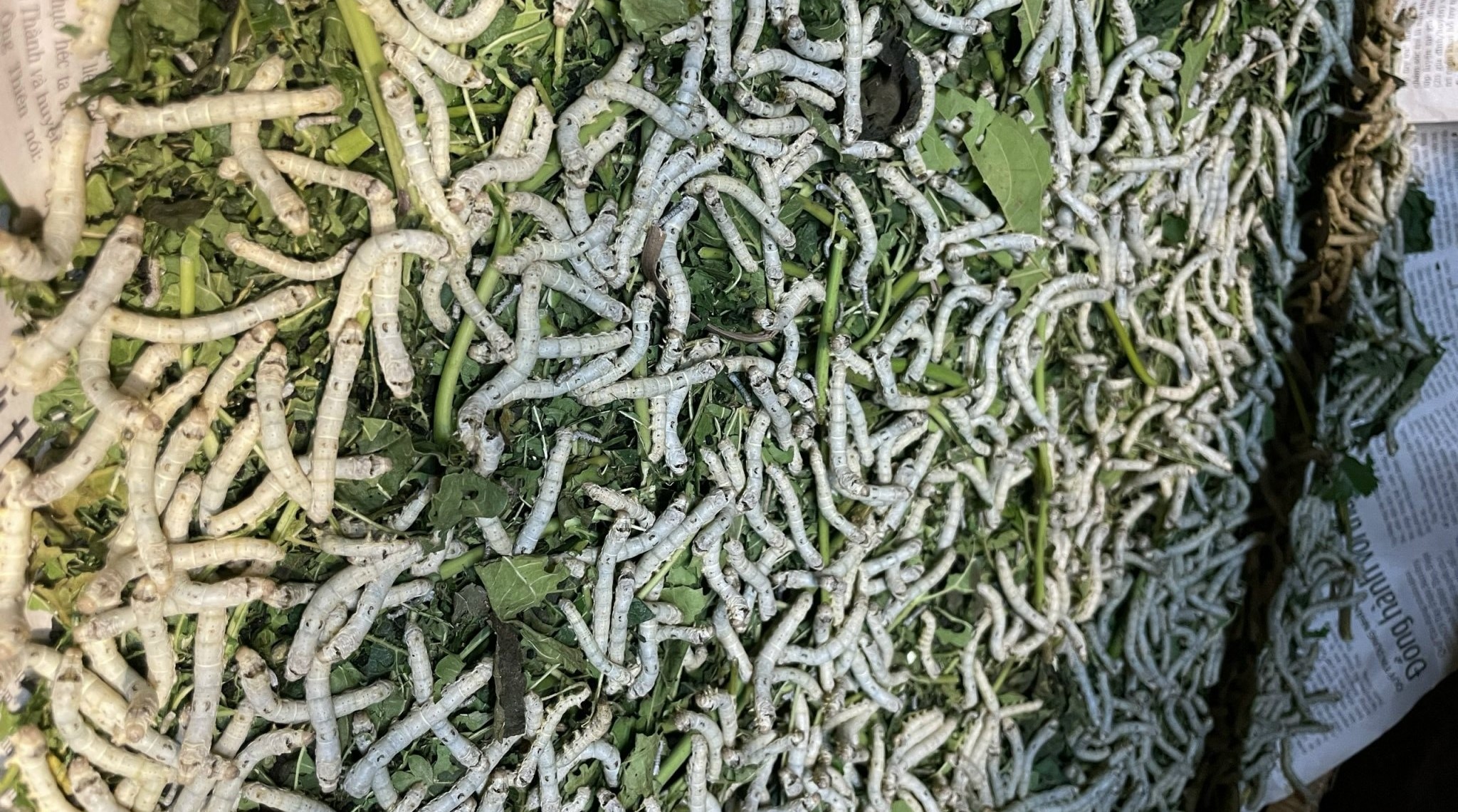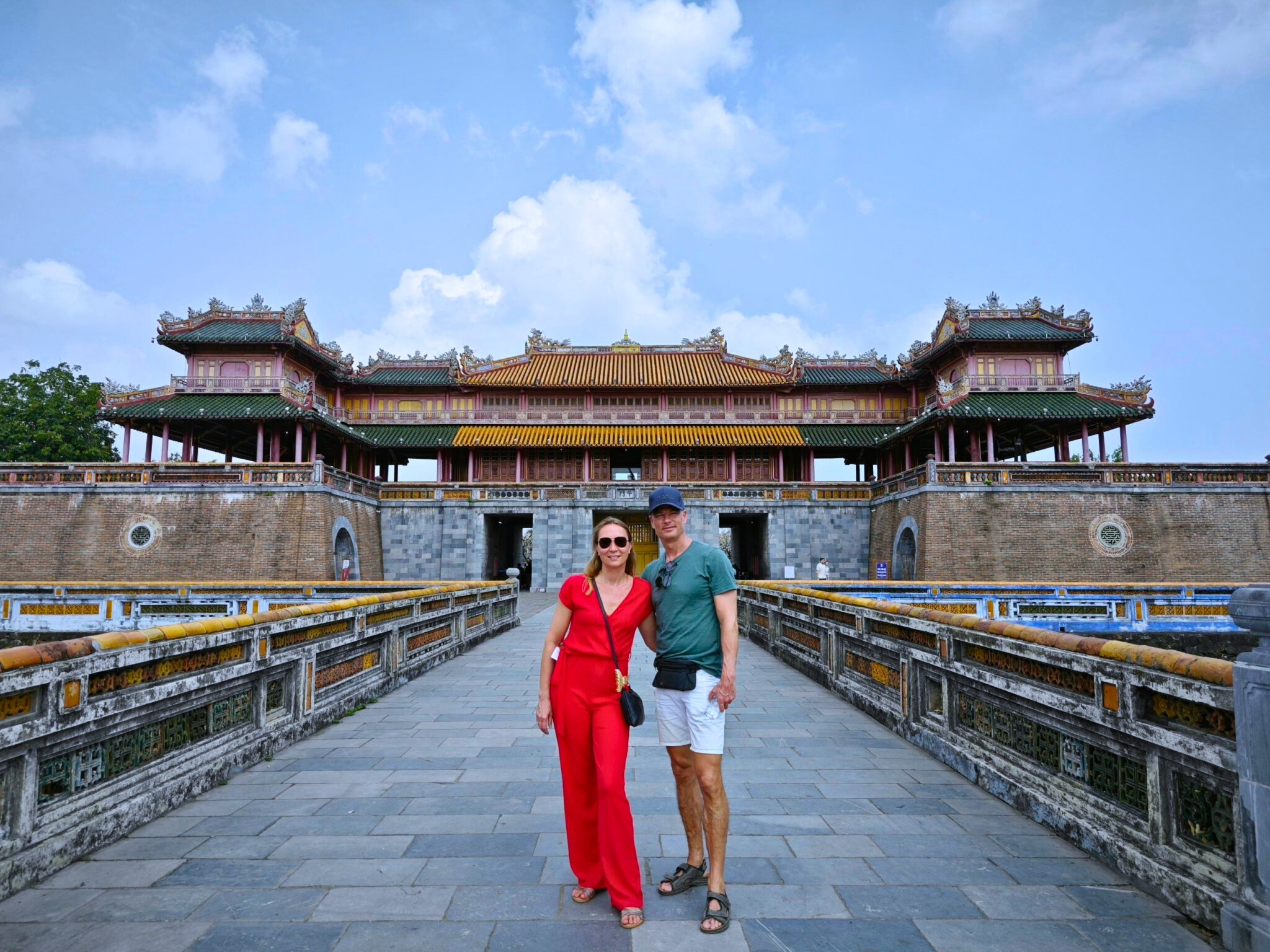Hoi An Silk Village: Complete Guide to Vietnam’s Traditional Silk Weaving Heritage
Nestled in the heart of Central Vietnam, Hoi An Silk Village stands as a living testament to centuries of Vietnamese silk craftsmanship. This comprehensive guide explores everything you need to know about visiting this cultural treasure, from its rich history to practical travel tips that will enhance your experience.
What is Hoi An Silk Village?
Hoi An Silk Village, also known as Quang Nam Silk Village, is a traditional craft village located just 1 kilometer from Hoi An Ancient
Town. This 11-hectare cultural complex preserves and showcases the ancient art of silk production, from raising silkworms to weaving intricate patterns on traditional looms.

The village offers visitors an immersive journey through Vietnam’s silk-making heritage, combining educational experiences with hands-on activities. Unlike typical tourist attractions, this working village maintains authentic production methods passed down through generations of skilled artisans.
The Rich History of Silk Production in Hoi An
Silk weaving in Hoi An dates back to the 17th century when the town served as a major trading port on the Maritime Silk Road. Chinese and Japanese merchants frequently visited Hoi An, establishing it as a crucial hub for silk trade in Southeast Asia.
“The art of silk weaving in Hoi An represents more than just a craft—it’s a cultural bridge connecting Vietnam’s past with its present, preserving techniques that might otherwise be lost to modernization.” – Traditional Craft Expert
During the Nguyen Dynasty (1802-1945), Hoi An silk gained royal patronage, with local weavers creating elaborate costumes for the imperial court. The distinctive Hoi An silk patterns became renowned throughout Vietnam for their quality and artistic sophistication.
Essential Visitor Information
Location and How to Get There
- Address: 28 Nguyen Tat Thanh Street, Cam Ha Ward, Hoi An City
- Distance from Hoi An Ancient Town: 1 km (5-minute drive)
- Distance from Da Nang: 30 km (45-minute drive)
Transportation options include:
- Bicycle: The most popular choice for experiencing the countryside (15-minute ride from Ancient Town)
- Motorbike taxi: Quick and affordable (50,000-70,000 VND)
- Private car: Ideal for families or groups
- Walking: Pleasant 20-minute stroll through scenic paths
Opening Hours and Admission
| Season | Opening Hours | Adult Ticket | Child Ticket |
|---|---|---|---|
| High Season (Feb-Aug) | 7:30 AM – 5:30 PM | 30,000 VND | Free (under 12) |
| Low Season (Sep-Jan) | 8:00 AM – 5:00 PM | 30,000 VND | Free (under 12) |
What to See and Do at Hoi An Silk Village
1. Silkworm Cultivation Area
Begin your journey at the mulberry gardens where silkworms feed on fresh leaves. Expert guides explain the fascinating lifecycle of silkworms, from tiny eggs to silk-spinning cocoons. You’ll learn why mulberry leaves are essential and how farmers maintain optimal conditions for silk production.

2. Traditional Silk Processing Workshop
Watch skilled artisans demonstrate the intricate process of extracting silk threads from cocoons. The workshop showcases:
- Cocoon boiling: Softening cocoons in hot water
- Thread extraction: Carefully unwinding single silk strands
- Thread spinning: Combining multiple strands for strength
- Natural dyeing: Using traditional plant-based dyes
3. Weaving Demonstration Hall
The highlight for many visitors is watching master weavers operate traditional wooden looms. These century-old looms produce intricate patterns unique to Hoi An, including the famous “cloud pattern” silk that once adorned royal garments.
4. Hands-On Activities
Participate in interactive experiences that bring silk-making traditions to life:
- Try silk reeling: Extract threads from cocoons under expert guidance
- Basic weaving lesson: Create a simple silk pattern on a practice loom
- Natural dyeing workshop: Learn traditional coloring techniques
- Silk painting class: Create artwork on silk fabric (additional fee applies)

Shopping at Hoi An Silk Village
The village showroom offers an extensive collection of authentic silk products directly from the workshops. Popular items include:
- Ao Dai: Traditional Vietnamese dresses in contemporary and classic styles
- Silk scarves: Hand-woven with unique Hoi An patterns
- Home textiles: Cushion covers, table runners, and wall hangings
- Fashion accessories: Ties, pocket squares, and handbags
- Raw silk fabric: By the meter for custom tailoring
Insider Tip: Prices at the village are generally 20-30% lower than in Hoi An Ancient Town shops, and you’re guaranteed authentic, locally-made products.
Best Time to Visit
Understanding seasonal variations helps optimize your Hoi An Silk Village experience:
Peak Season (February – April)
- Pros: Perfect weather, all demonstrations running
- Cons: Larger crowds, especially mid-morning
- Tip: Visit early morning or late afternoon
Summer (May – August)
- Pros: Lush mulberry gardens, active silk production
- Cons: Hot and humid conditions
- Tip: Bring sun protection and water
Autumn (September – January)
- Pros: Comfortable temperatures, fewer tourists
- Cons: Occasional rain, reduced workshop hours
- Tip: Check weather forecast before visiting
Photography Tips
Hoi An Silk Village offers exceptional photography opportunities. Here are expert tips for capturing the best shots:
- Golden hour magic: Visit during early morning or late afternoon for warm, soft lighting
- Focus on details: Capture close-ups of silk threads, weaving patterns, and artisan hands at work
- Cultural sensitivity: Always ask permission before photographing workers
- Best spots: The traditional loom area and cocoon processing station offer the most photogenic scenes
Combining Your Visit with Other Attractions
Maximize your Hoi An experience by visiting nearby attractions:
- Hoi An Ancient Town: UNESCO World Heritage site just 1km away
- Tra Que Vegetable Village: Traditional farming experience (2km)
- Cam Thanh Coconut Forest: Basket boat tours (3km)
- My Son Sanctuary: Ancient Cham ruins (40km)
Practical Tips for Your Visit
What to Wear
- Comfortable walking shoes: The village covers a large area
- Light, breathable clothing: Workshops can be warm
- Sun protection: Hat and sunscreen for outdoor areas
- Modest attire: Respectful clothing for cultural sites
What to Bring
- Camera: For capturing the intricate silk-making process
- Small bills: For purchases and tips
- Water bottle: Stay hydrated during your tour
- Notebook: To record weaving patterns or techniques
Frequently Asked Questions
How long should I spend at Hoi An Silk Village?
Most visitors spend 2-3 hours exploring the village. This allows time for the guided tour, demonstrations, shopping, and optional hands-on activities.
Is Hoi An Silk Village suitable for children?
Yes! Children find the silkworm lifecycle fascinating, and the interactive demonstrations keep them engaged. Many families report it as a highlight of their Hoi An visit.
Can I buy silk products for international shipping?
The village shop offers international shipping services for larger purchases. Alternatively, many visitors choose to have custom garments made and shipped to their home countries.
Are guided tours available in multiple languages?
Tours are available in Vietnamese, English, Chinese, Japanese, and Korean. Private guides for other languages can be arranged with advance notice.
Sustainable Tourism at Hoi An Silk Village
The village demonstrates commitment to sustainable tourism practices through:
- Eco-friendly production: Using natural dyes and traditional methods
- Community support: Employing local artisans and preserving traditional skills
- Environmental protection: Maintaining organic mulberry gardens
- Cultural preservation: Teaching younger generations ancient techniques
Planning Your Perfect Visit
To make the most of your Hoi An Silk Village experience, consider this suggested itinerary:
- 8:00 AM: Depart Hoi An Ancient Town by bicycle
- 8:30 AM: Arrive at Silk Village, begin guided tour
- 9:00 AM: Explore silkworm cultivation area
- 9:45 AM: Watch silk processing demonstrations
- 10:30 AM: Try hands-on weaving activity
- 11:15 AM: Browse showroom and make purchases
- 11:45 AM: Depart for lunch in Hoi An
Conclusion
Hoi An Silk Village offers an authentic glimpse into Vietnam’s rich textile heritage while supporting local artisans and sustainable tourism. Whether you’re interested in traditional crafts, photography, or simply seeking a unique cultural experience, this living museum provides memories that last long after your visit.
From watching silkworms spin their delicate cocoons to trying your hand at traditional weaving, every moment at Hoi An Silk Village connects you with centuries of Vietnamese craftsmanship. Plan your visit today and discover why this cultural gem remains one of Central Vietnam’s most cherished attractions.
For more information about Hoi An attractions and tour packages, visit SAMTOUR VIETNAM or explore our comprehensive Central Vietnam Travel Guide. For insights on sustainable tourism practices, check out resources from UNWTO and Sustainable Travel International.




